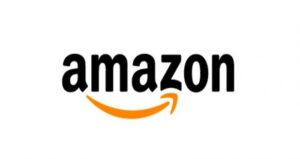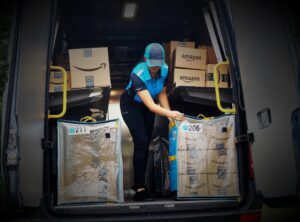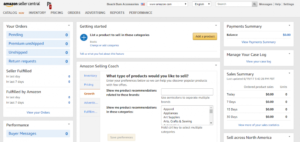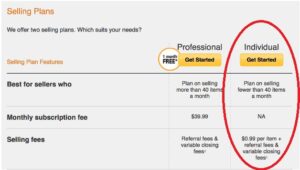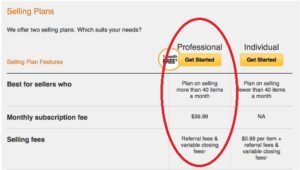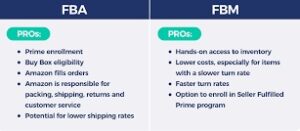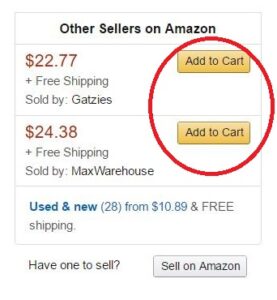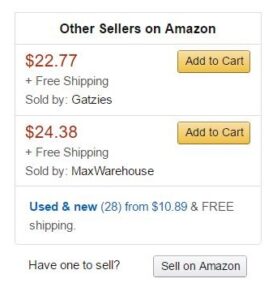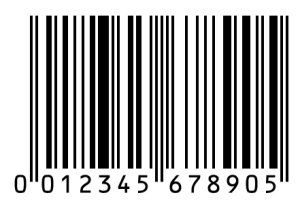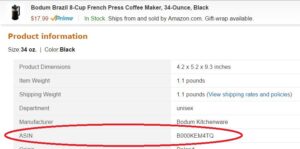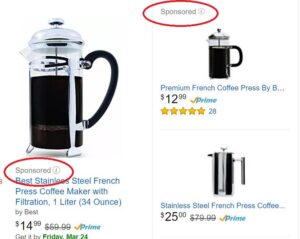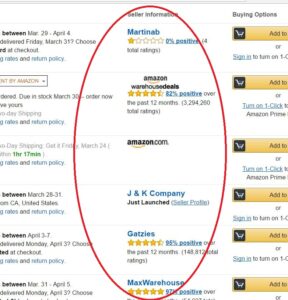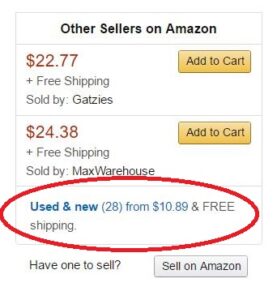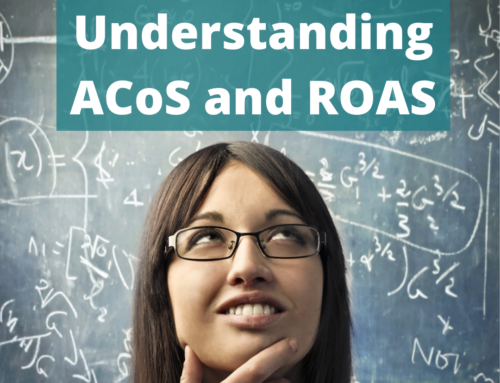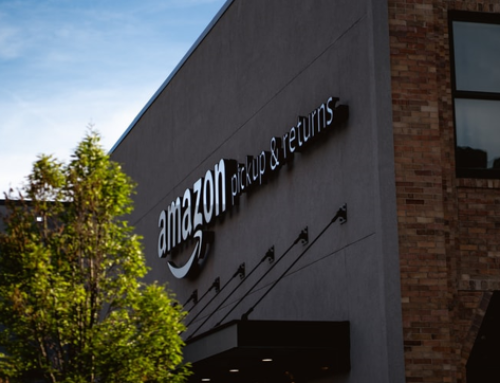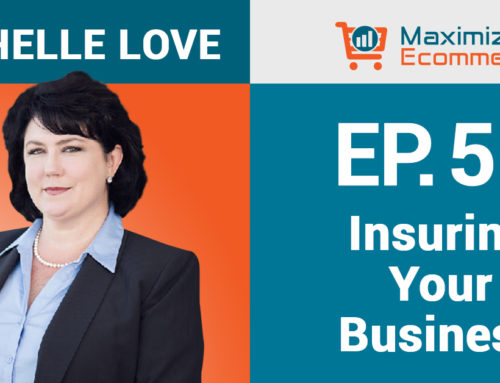In this article, we're going to talk about some basic terminologies for running an ecommerce business. Specifically, some concepts and terms related to selling on Amazon.
Glossary of Amazon and Ecommerce Terms
Why Amazon? Because Amazon has the largest customer-based ecommerce platforms. With Amazon, you will no longer have to worry about finding customers. Customers go to Amazon.
They also continuously works on being recognized and known. Thus, enticing new buyers to join their platform. Plus, they hold a very good reputation amongst buyers. Items are delivered almost immediately.
Amazon offers a low start up cost and you can even start up your business with them right at the comforts of your home. Another reason why its good with Amazon is because their Amazon Prime Members are the best buyers in the world! You also don't worry about the security of your card details since payments to Amazon are safe, secure and fast.
If you are looking forward to making serious money, then selling on Amazon is totally worth it. It offers various strategies for sellers to choose from for their businesses.
With Amazon, you can build you own Ecommerce Brand around your passion. You have the freedom to sell whatever your hearts desire.
You may be wondering, why do I need to learn this lingo so to speak. Well, it's going to help you have a better ability to research. You will understand better the “tricks of the trade”.
“The Language”
If you're reading blog posts or listening to podcasts or YouTube channels (which you should), it’s definitely helpful as you're looking to start a business in ecommerce.
What that's going to do is, by better learning the lingo, you're going to pick up a lot of the concepts that people are talking about.
It’ll help you feel more confident especially when you’re looking to join or you are already in a group discussion or forum on Facebook about an ecommerce business. It’ll get you engaged in the discussions and hopefully help others while getting information yourself.
Also, if you're communicating with suppliers, it's good just to know the general lingo of what people are talking about. It should help you in negotiations as well.
Basic Amazon Terms
I. Amazon Seller Account
Let's talk about some basic terms for Amazon. One of the most basic concepts is aucasinosonline.com/sa/ going to be your account, your seller account. Everything links back to your account. Whether you're doing this as an individual person or you have an LLC you're doing as a company, it's all going to link to your account.
It’s probably going to be the same email address and contact information as your buyer account. Just as you have a buyer account, when you go to amazon.com, you buy something, it already has your credit card information and address logged in. It's the same thing for a seller account, except instead of doing it as a seller, you're doing it as a buyer. It’s got your tax information, your inventory, all kinds of stuff including your history with Amazon. It's all linked to your seller account.
Types of Seller Accounts
There's two different types of seller accounts.
A. Individual Account. If you're considering doing this, I would say, just go out and register as an individual seller. It costs you absolutely nothing to do. There's no cost on the front end. The only cost involved, I should say, is when you pay an extra 99¢ for every sale you make.
You don't even pay that 99¢ until you make a sale. There's a few fees you pay every time a sale is made. But as an individual seller, you have no upfront costs except for paying 99¢ per sale. You can actually save that if you can actually save that if you register as a Professional Seller.
Check out more about Individual Seller Account here.
B. Professional Account. As a Professional Seller, you pay $40 a month. If you're going to sell at least 40 products in a month, it's definitely worth your while to do.
Benefits of having a Professional Account. As a Professional Seller, you get the ability to have some “bells and whistles”. You will be able to run Sponsored Product Ads which we'll talk a little bit more about here later in this article.
You've got the ability to potentially sell them in more categories. Once you've got up and running and is selling at least 40 products a month, then it's worth your while to have a professional account.
Tips. Once you get to that milestone, it's definitely the Professional Account is the way to go. But it's just starting out. Individual is my recommendation. It's how I did it when I first started out. Then eventually, when I got to the point of selling over 40 in a month, that was the time I shifted or upgraded to having a Professional Seller Account.
At this point, I definitely got my money's worth of $40 a month. In fact, it's a great investment. But don't make that investment until it's time for you.
Furthermore, you also have to think about how you can protect your Amazon Seller Account. Beginners or those new to the business fall easily as victims to these bad sellers. You have to ensure that your account is protected so you can prevent your account from being suspended.
II. Marketplace
Another basic terminology when it comes to selling on Amazon is the marketplace. If you think back to a couple of hundred years ago, you had a town square where sellers would gather to sell. Maybe they were selling fruits and vegetables or a blacksmith was selling horse shoes or whatever it was. The point is, someone was selling.
You had people coming together to buy things. If you were buying something as a customer, you would go to wherever that marketplace is because you knew you would be able to find certain things. That's still the kind of a concept Amazon is implying on it’s Marketplace today. A mall, basically is a marketplace with different stores and whatnot.
Amazon is a virtual version of this. A lot of people don't realize this because you go on Amazon and when you purchase something, it looks like you're buying it from Amazon. A lot of people don't realize that when they're buying on Amazon, oftentimes they're actually buying from a third party seller.
In fact, about half of all sales made on Amazon are actually made by third-party sellers, which is crazy that so many sales are made by other companies other than Amazon. Whether individual sellers or other companies sell their product on Amazon, they are doing so because Amazon is a marketplace and it allows others to sell on it.
III. Fulfillment of Orders
As a third-party seller, when you sell something, the customer places the order, then the orders are fulfilled in two different ways.
Different ways to Fulfill Orders
A. Fulfillment By Amazon (FBA). Fulfillment by Amazon is basically where the seller has inventory of certain products. Rather than keeping an inventory of products at their location, they send the products to Amazon or keep an inventory of products with Amazon.
Once the sale is made, Amazon's workers take the item off the shelf at their warehouse, which they call fulfillment centers, box it up and ship it out to the customer. It's a very hands-off type for the seller, which is why this is a very popular program.
For me personally, I recommend this type of fulfillment for a start. Know more about Fulfillment by Amazon.
B. Fulfillment By Merchant (FBM). As a seller, you have the ability to send out the orders yourself. Let’s say, if an order, for example, came in to John Smith and Poughkeepsie for a coffee press, you’re shipping the item yourself. It could be from your house, warehouse or office or wherever you are shipping it from.
Amazon is basically just acting as the place where the transaction was made and was helping to bring the customer there and you just pay a small commission fee.
A good friend of mine, Michael Barnhill, will share how he Built a Seven Figure Amazon FBM Business.
What is the difference between the two?
Now, theoretically, you could do things both ways. You could actually set up products to do both ways. In my opinion, it's better to do Fulfillment by Amazon (FBA) if you can, because you tend to get a little bit of a bump in sales because you're able to sell as prime.
Fulfillment by Amazon is a good way to sell a product. So again, it's a very popular program because it is hands off.
IV. Product Sourcing
There's a couple of different ways that people source their products.
A. Retail Arbitrage (RA). This is where you buy low at a store and sell high on Amazon as long as the costs work out and it’s profitable. It is basically like you'd go out to a retail store and sometimes they have things on clearance or products are being phased out or seasonal products are being moved at a price that's really getting them to sell it so that the store has the ability to use that shelf space for something else.
Whatever the reason that something's being deeply discounted, if there's a profit that can be made, that's where people use this Retail Arbitrage (RA) strategy. This could be a very good thing.
B. Online Arbitrage (OA). It is actually the process of buying products from one online retailer such as Ebay or Walmart or whatever the case is and sells them for a profit (ramped up price) in another marketplace such as Amazon. The price for the items usually fluctuates so you still get a profit.
C. Wholesale. This is where you get another company's product and you buy in larger quantities of it. You might be buying directly from the manufacturer or from a distributor. As long as there's margins, then you're selling that product on Amazon and profit is made.
D. Private Label (PL). This is basically working directly with a factory putting on your own brand name and maybe making some small tweaks here or there with it’s packaging or a small modification is to be made for the item. That's basically the gist, the heart and soul. So to speak of that product, it is something that's already existing from the factory.
E. Create Your Own Product. This is basically creating your own product. When you create your own product, you could be working with a factory to create new molds, new designs or whatever the case is. By mold, I mean, whatever it is they use to shape that particular product. The factory is making something that's specifically designed for your company.
You can also learn more about how to development and create your own inventions or product to sell.
Always remember that all of these different ways to source products have their ups and downs. It's not like Amazon's going to say you have to only source products in one particular way but the nice thing is you could theoretically do all five.
V. Buy Box
Then another important concept is the buy box. The buy box is this add to cart button here on the right hand side.
If I was to look up this particular French press coffee maker on the right-hand side and if I wanted to buy it, the simplest way to do is, just hit that little add to cart button.
If you've ever purchased something on Amazon, You've probably seen the add to cart button. It's very simple. Most people when they buy, they buy from this particular Add to Cart button. The reason for that is, it is so simple. It's just right there.
I see the product I want. I go on the listing, it's immediately available. Down below it, I would be able to also see other sellers selling on Amazon. In this particular case, there's these two that they'd be showing on the same page as the buy box, but then there's also 28 total sellers.
On this page, we're seeing only three. Amazon is the one that has the buy box there. Amazon is the one selling it, but there are a couple of third-party sellers they're putting up front, so to speak because they're on that main page.
But if you clicked on that page or that link down below where it says 28, you’d be able to see that there are 20 total sellers selling this product. Of course, if I'm a customer, I'm probably just going to go with the best deal. Whoever has the buy box is most likely to get the sale.
Now you're wondering, okay, who does Amazon decide to have the buy box? Well, they have a fairly complex but I wouldn't say it's fairly. It is a very complex algorithm. No one fully knows what’s within that algorithm.
But if you think of it from the standpoint, at the end of the day, Amazon wants the customer to feel like that is a good experience, and they got a good deal.
Generally speaking, the things that are going to have a major impact on who has the buy box is the price. Then also, whether or not it's prime (because prime members like to buy prime, So if you're a prime member yourself, like me, you probably only buy things that have that little check mark, and the blue prime next to it), You can see this particular product does have a prime capabilities.
That means if I bought it, I could have free two day shipping. Prime members tend to only want to buy things that are eligible for prime. Now this particular product has 28 sellers and they're all competing for the buy box. One of the reasons people like doing Private Label or having their own product is, if they're the exclusive seller of that product, they will always have the buy box.
Comparing
Now, some people like to do Retail Arbitrage (RA) and Online Arbitrage (OA) because they can move the product fast enough or they don't buy that many of a particular item so that if it takes them a month or two or three or whatever the time it takes them, they've got a whole formula, then, whenever it is their turn to get the buy box because of pricing or whatever the case is, or whatever strategies they use to get the buy box, then it's worth it to them.
The key to remember here is, if you have that main buy box, you are going to be the one who's going to get the sale. Whether it be a product that sells a hundred a day or three a month. There's a wide range of products and how much they sell on Amazon, but if you have the buy box, whenever somebody goes to buy, you are most likely going to be the one that gets that sale.
VI. Product Identifiers
Also, it's good to know on Amazon about different product identifiers and everything basically works with a barcode.
A. Universal Product Code (UPC). You may be familiar with the idea of a Universal product code UPC. If you've gone to the store and you bought something, the cashier scans it, they're typically scanning off of a UPC. A UPC is going to be the same everywhere. Hence why it's called the universal.
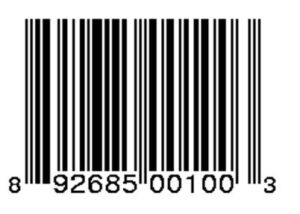 For a particular product, it's always going to be the same. If I bought a monopoly game at Toys ‘R Us, if I went to Target and I was to buy that same monopoly game with the same version of it, then it's going to most likely have that same UPC code. Because it's universal, it's the same everywhere.
For a particular product, it's always going to be the same. If I bought a monopoly game at Toys ‘R Us, if I went to Target and I was to buy that same monopoly game with the same version of it, then it's going to most likely have that same UPC code. Because it's universal, it's the same everywhere.
It doesn't matter where you bought a product it's most likely going to have the same UPC code.
B. European Article Number (EAN). Then there's the European version of it called a European Article Number (EAN). For the most part, if you're in the United States, you're going to work with UPC. Oftentimes, you can buy UPC (because you're going to need a UPC for each product you have) which is actually more simple than it sounds.
But the EAN, oftentimes, it’s just the UPC code with an extra digit on it. It might have like a zero on the front or whatever the case is, but it depends on where you buy it. But if you are going to buy UPC codes and you have aspirations of maybe one day selling in Europe, it's not a bad idea to also get an EAN number or a number that could also become an EAN number.
C. Amazon Standard Identification Number (ASIN). The Amazon Standard Identification number is Amazon’s specific number. When you go on Amazon, you're shopping, you click on the link to go see the listing for a particular product, in that listing page for the product, that particular listing has an ASIN assigned to it.
The ASIN is specific to that particular item. It doesn't matter who's selling it. It's that particular item getting that specific ASIN. Going back to the monopoly game, it would have a UPC code that’ll be the same in store elsewhere.
If that monopoly game was being sold on Amazon, Amazon is going to assign it an ASIN number.
D. Fulfillment Network Stock Keeping Unit (FNSKU). Referred to as an FNSKU, it is an Amazon term to identify basically each seller selling in Amazon. Each of the products they sell will be assigned a FNSKU.
This gets a little confusing. But we'll walk through here the difference between an ASIN and an FNSKU will go like this. If I'm looking at this particular product here, say for example this French Press Coffee Maker, if you were to scroll down a little bit lower on the page, you would come to this product information area where you’ll see its ASIN.
The B000KEM4TQ, that basically is how Amazon knows what this product is. This is Amazon's database that they know this particular product, that particular ASIN is found in Brazil, a cup French press coffee maker.
Now going back to the concept before that there were 28 sellers. Each of those 28 sellers is actually going to have their own FNSKU. They may sell other products and each of their other products have their own FNSKU for that particular seller, but each seller on this particular ASIN, all sellers are going to be selling with the same ASIN, but each seller is going to have their own FNSKU for this particular product.
VII. Sponsored Ads
You may have seen these before, when you're shopping yourself on Amazon or shopping for yourself on Amazon. You’ll see on the right-hand side where it says sponsored. Sponsored is a kind of somewhat grayed out, hard to see and you might even miss it but it's typically going to be at the top of the page in a row, then a column going down on the right hand side.
That's typically where you're going to see Sponsored Ads. Amazon always does little tests here and there. They change it up just to see if they get better conversions if they put them out in a certain way. But we'll walk through some basic concepts here for Sponsored Ads.
Pay per Click (PPC)
The way it works is it's a bidding system. Each seller is bidding to get their particular product put on that page for a particular keyword. If they wanted to bid on the keyword for, let's say French press coffee maker or French Press or Coffee Press, those are all different keywords.
They'll be bidding that every time someone clicks on the keyword, they'll pay maybe 40¢ or a dollar or whatever the case is that makes sense to them when they try to factor in what's referred to as the average cost of sales, which is sometimes referred to as ACoS.
Few sellers know that Maximizing Effectiveness of Amazon PPC is actually possible. Edward Ruffin shares his experience about this. And there are also a lot of not just useful but effective Strategies for Amazon PPC and Brand Building.
Advertising Cost of Sales (ACoS)
ACoS is best explained by this example. Let's say, you had spent $300 on Sponsored Ads and you made a thousand dollars in sales. If you do the math there, $300 in a clicks, divided by a thousand dollars in sales would be 30%.
The average cost of sale would be 30%. When you factor in the other costs, was it profitable to you? If it was, then it's worth continuing to do so. You’ll see how this is a particular sponsored listing that we're seeing there.
Now you want your results to show up organically. Organically means it was not because you paid for it. Amazon is going to show whatever, when someone looks up a particular keyword like French Press Coffee Maker.
If somebody looks up French Press Coffee Maker, Amazon knows that there's history of certain products that are selling when people purchase that. They'll bump those products up higher and higher in the organic listings. Instead of maybe being on page eight, it might be on page two or even page one.
For lack of a better word, you could say it helps to kind of juice up sales or prime the pump so to speak by using these Sponsored Ads because Amazon doesn't really care that much. I'm sure it's factoring in their algorithm somewhere, but they don't care that much, whether it was because of a Sponsored Ad or if it was because of the organic listing or someone searched for a keyword and it ended up on a particular listing page and made the sale.
If the ACoS can work out, it's worth your while. What you're ultimately doing is you're getting impressions.
Impressions
Let’s take for example, three coffeemakers. When I looked up, whatever term I looked up, let's say it was coffee press and the Coffee Press came up (French Press Coffee Maker), that is called an impression.
It takes lots of Impressions to get to a sale. Let's say if I had a thousand impressions, maybe 20 people clicked on them, that would be a 2% of the impressions people clicked on.
Conversion
Now all that, you want to have a conversion. If you had 20 people click on it, let's say four of them resulted in sales, that's a 20% conversion rate. Basically everything's kind of a formula.
Once you start learning some of these basic formulas of what's profitable and what works as far as having good conversions (because at the end of the day, that's what Amazon wants). They want conversions. Conversions proves that this is a product that customers want and they're willing to buy.
How Products Perform
It's also good to know how sellers and products perform. There's a few different terms for that. Let’s have a look into that a little further.
Best Seller Ranks. You might think that's about the seller themselves, but it's actually going to be about the product. The same coffee press that we've been looking at here, you can see there there's the best seller rank.
How does it work?
The way it works is that, you see here that in this particular product, the Coffee Press, it is ranked 404 in Home and Kitchen. Home and Kitchen there is a category. For an item to get 404, it means it is really highly ranked.
The smaller the number, the more it is highly ranked. It's all based on the amount of sales and sales volume it’s doing. This particular product is also number two in other categories such as Home and Kitchen, Kitchen, and Dining, Coffee and Tea, Espresso, Coffee Makers, French presses.
That was a mouthful because each one of those is going to be called a sub category. Now, if you're ever gauging how much a product sells, you can do so by just looking at what the Best Seller Ranking is or the BSR. But always make sure you're looking at the “parent” category because the sub-category is going to vary wildly between products.
Take note that, 404 in Home and Kitchen is going to perform differently than the 404 in Office Products because Home and Kitchen is going to be a more popular category that more people are buying things off of.
But if you're looking for apples to apples in Home and Kitchen, you would know that this particular product sells more and it's ranked 404, then something is ranked for, let's say 250,000 in Home and Kitchen. It's a nice way to gauge.
You can never know exactly how many things it sells, but you can get a pretty good gauge. This might be selling 50 to a hundred units a day. If it's saying consistently at this particular Best Seller Ranking. But in the Best Seller Ranking, they change. It's not like the ranking is weekly because I believe they change hourly.
This all depends on how much that product is selling relative to other products in the same category.
How customers give reviews and their feedback
Differentiating Product Review vs Seller Feedback
Now, let's also talk about how customers reviews and give their feedback. You see star ratings quite a bit. There's a couple of different ways that sellers and products are reviewed.
A. Product Review. This is the product itself. It doesn't even necessarily matter who the seller is. For example, on our Coffee Press, you saw that there were star ratings. On this particular one, this is a listing that's clearly well-established because lets say, it has 2,700 customer reviews.
For one, let's take a look at a Product Review for our Coffee Press that we were looking at earlier. If other people have good things to say about that particular product, you're more likely to buy it. This is what's called a product review.
It takes a while to get that many reviews. Let’s say, it was in 2004 when this particular Coffee Press came out. It's been around for a long time and it's built up a good reputation over time.
Four and a half stars is good. Most people are very happy buying a product that's in the four to five star range. If it's less than four stars, it can be a little harder to sell that product just because you want to buy the best and you want to see what other people have to say.
B. Seller Feedback. A Seller feedback is going to have a big bearing on the seller themselves. Sometimes whether or not people buy a product from that particular seller, people will question, is that seller trustworthy?
These are feedbacks from the customers to the sellers themselves. Mostly, it tells how they handle a customer upon sale of an item, Product/Shipping Inquiries, complaints and requests and how they are being handled by the seller.
We all know, price doesn't necessarily mean that you're going to have the best experience. Oftentimes, customers will look here. Seller reviews can become very important, especially if you're competing with multiple sellers.
Then you can also see there if I look down at the bottom of the page, those two particular companies are 95%, 97% positive. Like for example, Gatzies (Seller), they've got 148,000 reviews. Now that's a very well established company.
If you're looking at this and you're thinking about buying this product, you're looking at price, you probably feel comfortable buying from a company that's 95% positive, four and a half stars. Over the course of the last 12 months they have that much positive feedback and 150,000 people almost have reviewed them.
You'd probably feel good about it, whereas this isn't going to prevent someone from selling, but take a look at the company right above Gatzies. It says “just launched”.
So that might make people feel a little bit more apprehensive. But if it's being fulfilled by Amazon, people probably aren't even going to look.
But when you see one particular company with 0% positive for reviews. We wish this company well and hope that whatever issues they have are being figured out. But as a buyer, people might be less likely to buy.
If someone did make it, which most people just go with whatever the buy box is and click it and add to cart, some Amazon customers are savvy and do this. They could look and see if there's a better deal somewhere.
VIII. Amazon Warehouse Deals
Amazon warehouse deals are basically, if something is damaged in the warehouse or slightly damaged, I should say, sometimes they'll pass off deals to people as an Amazon warehouse deal. It's not in perfect condition, but it's still decent. They'll sell it as used.
You’ve been encountering the word ecommerce earlier in this article. Let’s define what this is. Ecommerce is simply Electronic Commerce. It’s actually a business model where people can sell and buy online or “electronically”.
The buying and selling are being conducted over computers, tablets and smartphones. The trade is not just about products but services as well. You can basically buy and pay plane tickets, read or buy books, listen or download music and many other services.
Ecommerce is helping businesses establish a wider market. Since transactions can be done online and covers almost everything, anyone is simply reached by it. It also provides a cheaper and easier delivery of goods and services.
With ecommerce, businesses with physical stores that also sell online, get an added sales on their product and services with convenience. They are easily and conveniently reached by buyers. This is a very effective Marketing Strategy since it is very convenient for both the seller and the buyer.
Is Ecommerce a good business?
Regardless if you're an investor or a bootstrapper, or if you don't have enough money to start a new business, ecommerce is a great field to try to get into, most especially today. Doing business in ecommerce disregards the fact whether you are a beginner in ecommerce or not. The necessary tools and resources are all laid out for you to use. Perhaps what you just need is steady work ethic and a desire to succeed.
I believe you can always make it work regardless the situation when you just try. Learn more about the How's and what are the Key Foundational Elements to Success on Amazon as you go along.
Conclusion
Hopefully this article has helped you clarify a few terms when selling on Amazon and you've learned a thing or two.
Lastly, I just want to say thank you and wish you the best as you work ahead to get ahead in your ecommerce business. Thanks and have a great day!

